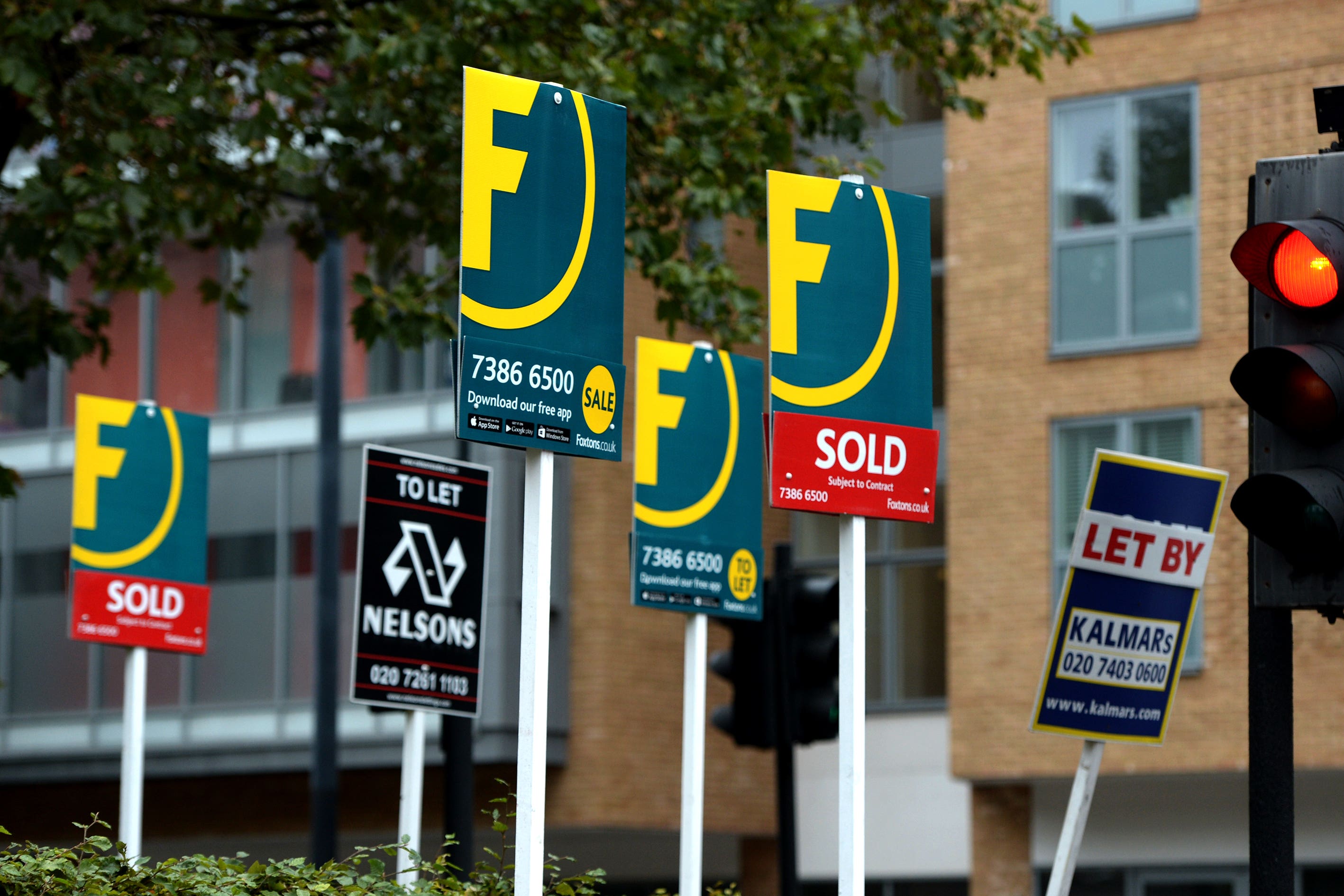Two thirds of first-time buyers get property in joint names, says mortgage giant
Some 63% of first-time buyer mortgages taken out between January and December 2023 were in joint names

Nearly two-thirds of people taking their first step on the property ladder are doing so with someone else, according to a mortgage lending giant.
Some 63% of first-time buyer mortgages taken out between January and December 2023 were in joint names, involving two or more people, Halifax found.
Average property values for first-time buyers are now about 6.7 times the typical UK salary (£43,257), Halifax said.
Its analysis was based on its own data as well as that for Lloyds Bank and Bank of Scotland, which are all part of the same banking group.
The overall fall in house prices we saw in 2023 will go some way to helping people get on the ladder for the first time
Lloyds Banking Group was the UK’s biggest mortgage lender in 2022, lending £52.7bn during the year, according to figures from trade association UK Finance.
First-time buyers put an average deposit of £53,414 down last year – around £21,000 more than a decade earlier, according to the analysis by Halifax.
Across the UK, the average first-time buyer house price in 2023 was £288,136, slightly down from £302,008 in 2022.
Terraced homes made up 30 per cent of new mortgages for first-time buyers last year, while flats accounted for 27 per cent and detached homes accounted for 10 per cent.
Semi-detached homes made up 29 per cent of first-time buyer properties in 2023, while bungalows accounted for 3 per cent, Halifax said.
Flats have increased in popularity as a starter home compared with a decade earlier, while the proportion of first-time buyers choosing a terraced home has fallen, the bank added.
Back in 2013, 37 per cent of first-time buyer purchases were for terraced homes and 21 per cent were for flats.
The average first-time buyer last year was aged 32, but this ranged from 27 in the Ribble Valley in Lancashire to 37 in Slough, Berkshire, Halifax said.
Kim Kinnaird, director, Halifax Mortgages said: “The overall fall in house prices we saw in 2023 will go some way to helping people get on the ladder for the first time – but these buyers are still dependent on a steady supply of properties in their price range, while they are faced with the continued pressure of saving for a deposit, when rent and living costs are high.”
Many of the most affordable places to buy a first home are in Scotland, Halifax said.
Inverclyde was identified as the most affordable location, with properties costing about 2.6 times the average salary (£41,598).
At the other end of the scale, London continues to host some of the least affordable places in the country to set up a first home, with first-time buyers typically needing to find a deposit of more than £100,000.
First-time buyers in Islington in London, face property values at 10.6 times the average salary (£57,548), making it the least affordable location for people getting on the property ladder in the research.
Here are average first-time buyer house prices, deposits and deposits as a percentage of the purchase price in 2023, according to Halifax:
– East Midlands, £235,941, £36,139, 15 per cent
– East of England, £327,926, £52,682, 16 per cent
– London, £492,234, £108,848, 22 per cent
– North East, £174,693, £29,740, 17 per cent
– Northern Ireland, £174,337, £31,948, 18 per cent
– North West, £215,655, £35,581, 16 per cent
– Scotland, £188,670, £39,691, 21 per cent
– South East, £353,724, £59,075, 17 per cent
– South West, £273,968, £49,135, 18 per cent
– Wales, £199,930, £36,350, 18 per cent
– West Midlands, £236,253, £37,459, 16 per cent
– Yorkshire and the Humber, £204,178, £33,208, 16 per cent
Bookmark popover
Removed from bookmarks